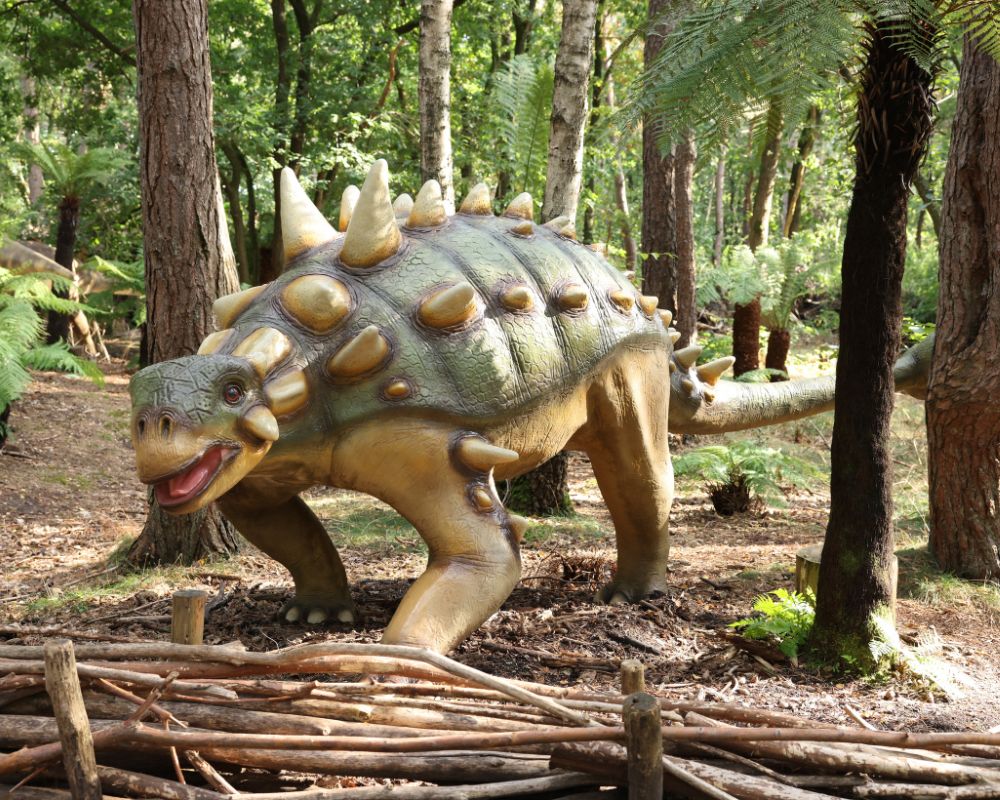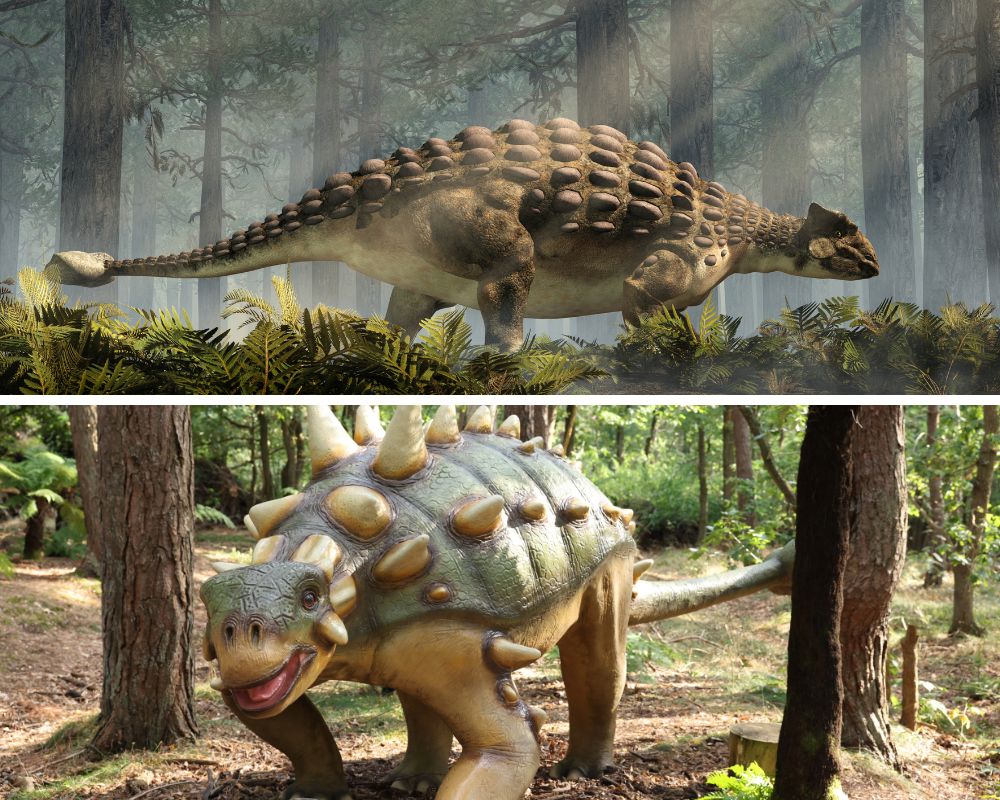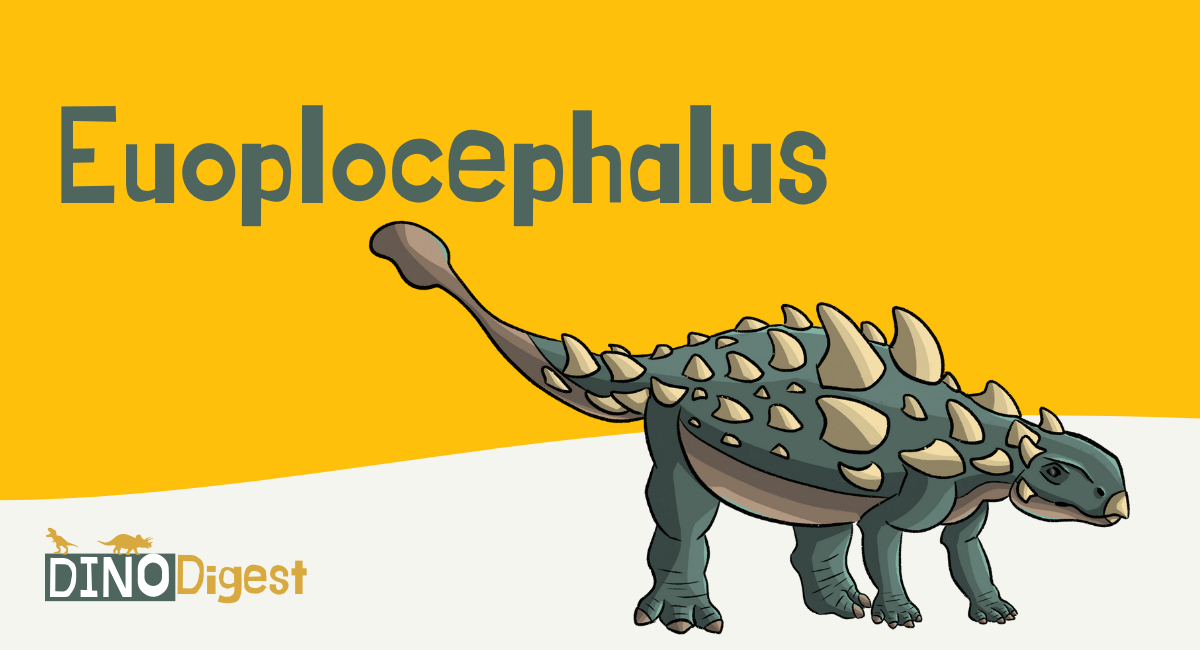The Euoplocephalus wasn’t afraid of anyone because of its club-like tail! This dino was a herbivore, so it wasn’t a predator. But it could break the bones of its enemies with its armored body.
Table of Contents
Some Quick Facts about the Euoplocephalus

| Name | Euoplocephalus (meaning “well-armored head”) |
| Type of dinosaur | Ornithischia |
| Territory | Wet forests with swamps near the beach and drier highlands, Canada and the US |
| Size | Large, 4 feet tall, 17 feet long |
| Color | Likely light brown |
| Interesting Characteristics | Large waist, small eyes, armored body, and large tail club |
| Diet | Herbivore |
| Major Threats | Albertosaurus libratus and Daspletosaurus |
The Euoplocephalus was an ankylosaurian dinosaur, meaning it had body armor and ate plants. It was chubby and had a tail with a club at the tip. This club was the major defense it had from predators.
Why the name “tank dinosaur”?
Euoplocephalus had bony plates on its back, that were fused together, acting like armor. Being a slow-moving dino, it needed a way to protect itself from predators and its body armor kept it safe.
What Did a Euoplocephalus Use Its Tail for?
The Euoplocephalus had a long tail with spiked osteoderms (skin bones) up to the middle, and a club at the tip. This dino used the club-like tail to defend itself from predators or in fights with another dinosaur from the same species.
If the tail had a big enough knob, it could crush bones! The Ankylosaurus, who is from Ankylosauria like the Euoplocephalus, used its tail for protection too. They could swing their tail from side to side, and it was reinforced to protect it from impacts.
What did the Euoplocephalus eat?
This dino was a herbivore, meaning it was eating plants (much like the Riojasaurus). To the best of our knowledge, Euoplocephalus was roaming alone, looking for ferns, cycads, and possibly some flowering plants. It would use its beak and small teeth to chew the food.
How Many Fossils of the Euoplocephalus Have Been Found?
Between incomplete and complete skeletons, about 28 specimens of this species have been found.
Lawrence Morris Lambe found the first fossil of the Euoplocephalus tutus in 1897 in the Dinosaur Provincial Park in Alberta, Canada. The first name of this ankylosaur was actually Stereocephalus tutus, but the paleontologist who found it discovered that there was an insect with the same name. So he had to change it.
Where Did the Euoplocephalus Live?
The Euoplocephalus was a North American dinosaur. Most of them lived in the Dinosaur Park in Canada. 58 Dinosauria species have been found there. But there have been fossils of the Euoplocephalus discovered in Montana as well.
When this ankylosaurid dinosaur lived there, there were forests with marshes and swamps near the beach and drier upland. The winters were cold. It shared this habitat with its predators: Daspletosaurus and Albertosaurus libratus. Nowadays Dinosaur Park has badlands, grasslands, and cottonwoods near rivers.
What’s the Difference Between an Ankylosaurus and a Euoplocephalus?

The Ankylosaurus is a relative of the Euoplocephaus. They lived during close periods of time and in the same places. Both were armored dinosaurs with club-like tails.
The biggest difference is in the tail. Euoplocephalus have long tails with a large club and Ankylosaurus have short tails with leaner clubs. The Ankylosaurus also had nostrils on the side of its head, while the Euoplocephalus had them at the front. And the mini horns at the back of the Ankylosaurus head were very prominent.

